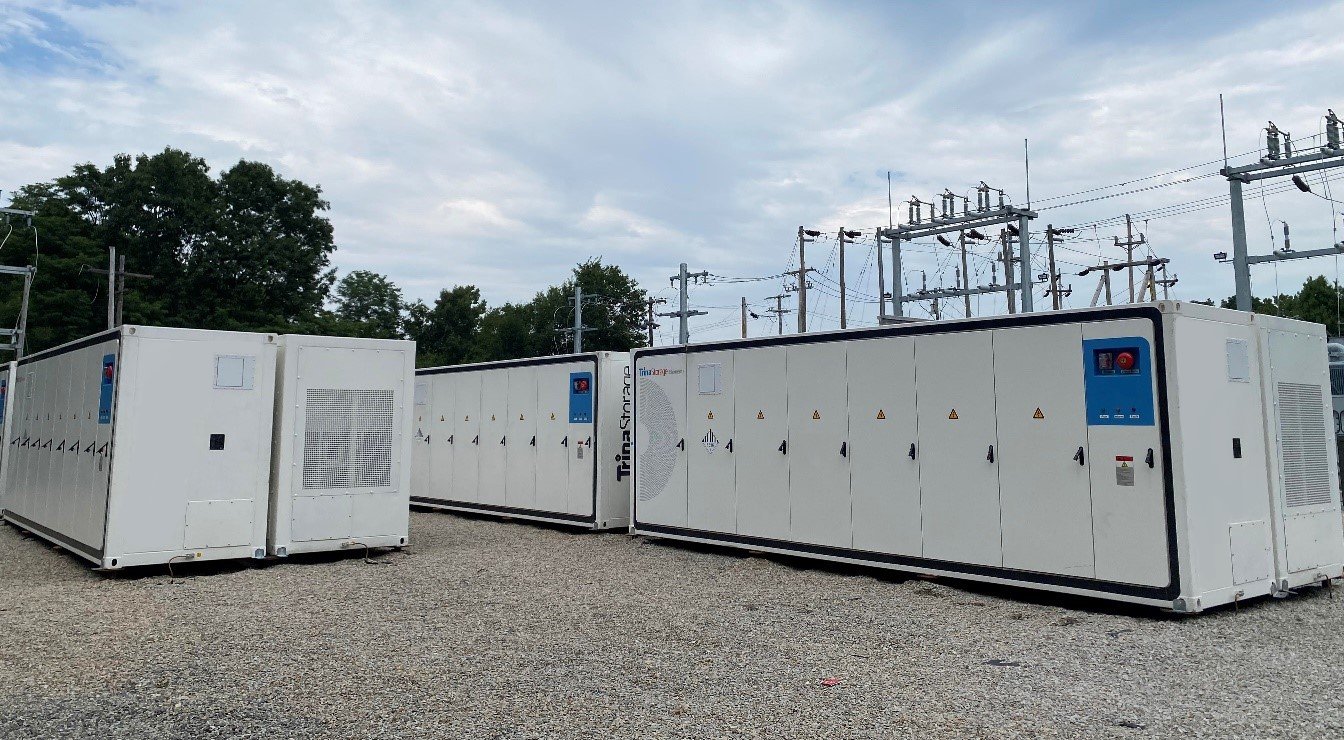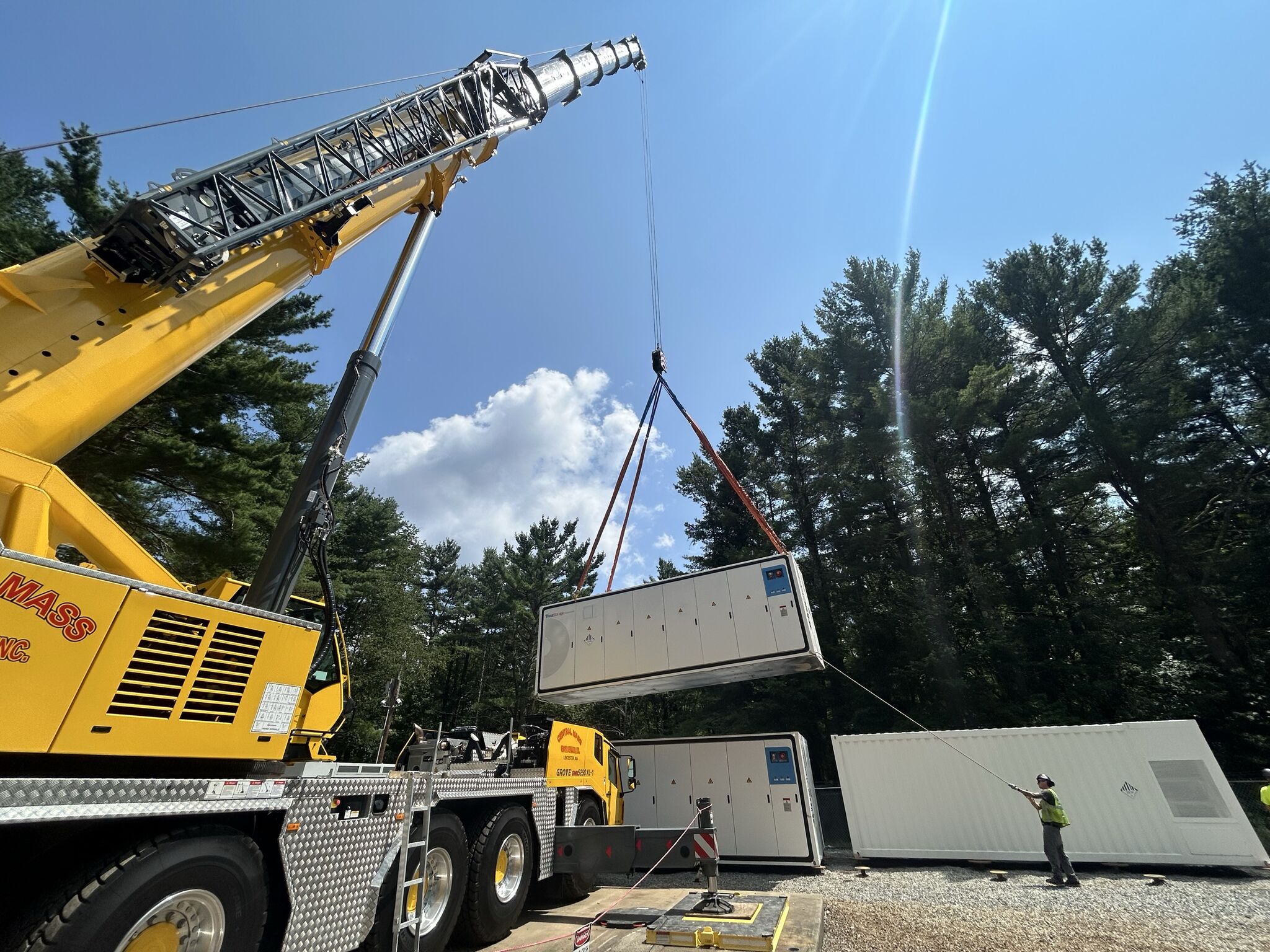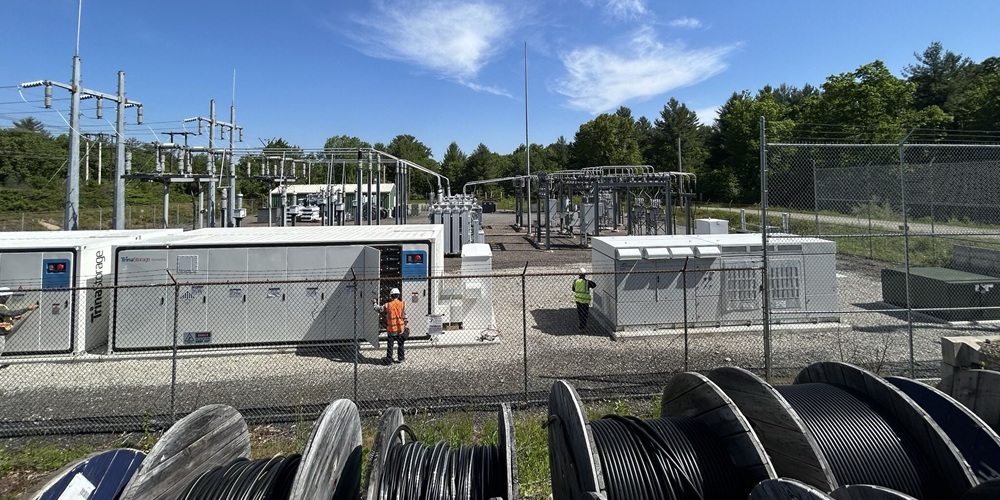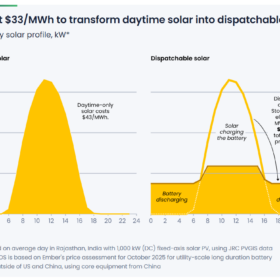Four utility-scale energy storage projects in Massachusetts have successfully sold their Inflation Reduction Act (IRA) investment tax credits (ITC), securing nearly $10 million in funding. The batteries range from 9 MWh to 22 MWh and will provide various grid services to participating municipal utilities.
As part of a broader deal, Lightshift Energy, the developer, is working with the Massachusetts Municipal Wholesale Electric Company (MMWEC) and its member utilities to potentially deploy up to 50 MW of two- to four-hour battery storage. The group says these installations could ultimately save the municipalities more than $200 million over time.

Image: Lightshift Energy
According to Lightshift, the batteries will be used for peak shaving, charging during cheaper daytime hours and discharging during more expensive evening periods. The New England ISO region has regularly experienced a “solar duck curve” since at least 2018, providing an opportunity for energy storage to capitalize on price arbitrage. The region’s Clean Peak and ConnectedSolutions programs aim to shave regional demand peaks by incentivizing energy storage.
One of Lightshift’s batteries, a 3 MW/9 MWh system manufactured by Trina Energy Storage, was installed for the Paxton Municipal Light Department and connected directly to a local substation. The parties estimate it will save the utility more than $10 million in energy costs over the life of the contract.
The largest of the four, a 5 MW/22 MWh battery, was constructed in Holden, Mass., and completed in August 2024.
The Wakefield battery, which combines power grid backup with additional energy services offered at the other facilities, is expected to be completed by this summer. The town’s Energy Park website is tracking battery installation progress through images and also features information on a 2.5 MW backup gas generator.

Image: Paxton Municipal Light Department
Basis Climate’s role was to identify a credit buyer and manage the tax credit transfer from start to finish. The company has expertise with documentation for both small and large transactions, having completed what it calls “hundreds of millions of dollars of tax credit transfers,” ranging from $355,000 to $100 million.
As part of its technical verification, Basis Climate confirmed that contractors working for Lightshift made proper payments. Lightshift noted that because each project exceeded 1 MWac in capacity, prevailing wages and apprenticeship labor were required to qualify for the full tax credit. Basis Climate partnered with Dili, which employed an “AI-powered general diligence solution” to verify wage compliance.
This content is protected by copyright and may not be reused. If you want to cooperate with us and would like to reuse some of our content, please contact: editors@pv-magazine.com.








By submitting this form you agree to pv magazine using your data for the purposes of publishing your comment.
Your personal data will only be disclosed or otherwise transmitted to third parties for the purposes of spam filtering or if this is necessary for technical maintenance of the website. Any other transfer to third parties will not take place unless this is justified on the basis of applicable data protection regulations or if pv magazine is legally obliged to do so.
You may revoke this consent at any time with effect for the future, in which case your personal data will be deleted immediately. Otherwise, your data will be deleted if pv magazine has processed your request or the purpose of data storage is fulfilled.
Further information on data privacy can be found in our Data Protection Policy.